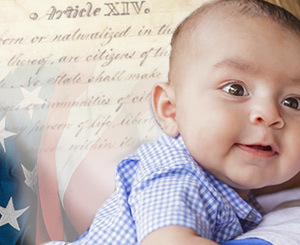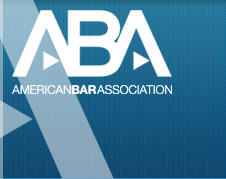Executive Order and Birthright Citizenship

President Donald Trump kicked off a recent debate when he claimed he can use an executive order to end citizenship that is automatically granted to U.S.-born children of undocumented immigrants. “They’re saying I can do it just with an executive order,” he said, in an interview with the news site Axios. His position met strong opposition, including from influential members of his own Republican party. “You cannot end birthright citizenship with an executive order,” House Speaker Paul Ryan said flatly. Who’s right?
The issue of who is a U.S. citizen has been a recurring question in American constitutional law since the time of slavery. A defining event came immediately prior to the beginning of the Civil War when U.S. Supreme Court Chief Justice Roger Taney wrote the 7-2 opinion in the Dred Scott case stating that African-Americans were not United States citizens.
After the conclusion of the Civil War, Congress passed the Civil Rights Act of 1866, which gave citizenship to all U.S.-born persons, including former slaves. It was followed with passage and state ratification in 1868 of the 14th Amendment, which states: “All persons born or naturalized in the United States, and subject to the jurisdiction thereof (emphasis added), are citizens of the United States and the State wherein they reside.”
It would take a lengthy process for a constitutional amendment – rather than a congressional statute – to change the constitution. But the president’s statements have raised questions about the sanctity of the 14th Amendment as written and whether a president has the authority to interpret the amendment to his liking through an executive order.
Executive orders have been successfully challenged in court. The most notable rebuke to a president came after Harry Truman signed Executive Order 10340 in 1952, which placed all U.S. steel mills under federal control during the Korean War. The U.S. Supreme Court ruled 6-3 in Youngstown Sheet & Tube Co. v. Sawyer that Truman had overstepped his authority because he attempted to make law rather than clarify an existing piece of legislation.
In that decision, Justice Robert Jackson, in a concurring opinion, put forth a three-part test related to the overreach of presidential power that is still relied upon by courts today. Jackson said the president’s powers were at their height when he had the direct or implied authorization from Congress to act; at their middle ground or “a zone of twilight,” as he put it, when acting without either a congressional grant or denial of authority; and “at its lowest ebb” when a president acted against the expressed wishes of Congress.
The president and a few legal scholars say the U.S. Supreme Court has never directly addressed whether the children of undocumented immigrants fall under the 14th Amendment’s “subject to the jurisdiction thereof” clause. Signing an executive order would be a way for the president to try to press the high court for clarification.
But a string of U.S. Supreme Court cases since a landmark decision 120 years ago would appear to work against the president’s argument.
In 1898 in U.S. v. Wong Kim Ark, the court upheld in a 6-2 decision the concept of birthright citizenship. The majority noted that because the 14th Amendment did not define jurisdiction and citizenship “in this as in other respects, it must be interpreted in the light of the (English) common law.”
In Plyler v. Doe in 1982, the Supreme Court, by a 5-4 vote, provided undocumented children the right to a public education. A Texas school district had argued that persons who have entered the U.S. illegally are not “within the jurisdiction” of a state even if they are present within its boundaries and subject to its laws. The majority in Plyler rejected that argument.
“Nor do the logic and history of the 14th Amendment support such a construction. Instead, use of the phrase ‘within its jurisdiction’ confirms the understanding that the Fourteenth Amendment’s protection extends to anyone, citizen or stranger, who is subject to the laws of a State, and reaches into every corner of a State’s territory,” the court said.
So who is right: the president or the speaker? Unless the U.S. Supreme Court has a change of mind, it would appear the speaker has a stronger legal case.
Posted 11/5/2018
Other Fact-Checked Subjects:
- Hate Speech
- Flag Burning
- Pardons
- Affirmative Action
- Free Speech
- Ninth Circuit
- Forced Evacuation
- Executive Orders
- National Anthem Controversy
- Gun Laws
- Broadcast Licenses
- Revoking Visas
- Non-Citizen Terrorist Cases
- Religious Displays
- Congressional Seating
- Sexual Harassment
- Revoking Citizenship
- Influencing U.S. Elections
- Legal View of Treason
- Chain Migration
- Guns and Courts
- Students' Right to Protest
- Attorney-Client Privilege
- Recusal
- The President and the Law
- Immigrant Rights
- Revoking Security Clearances
- Confidentiality Agreements
- Resigned or Fired
- Deadly Force
- Birthright Citizenship
- Press Credentials
- Troops at the Border
- Election Re-Vote
- Emergency Powers
- Immigration Law
- Contempt of Congress
- Boycotting 2020 Census
- Electoral College
- Impeachment
- Separation of Powers
- Equal Rights Amendment
- Whistleblower Protection
- Pandemic Authority
- State Powers
- Employer Limits
- Police Immunity
- Federal Forces
- Hatch Act
- Attorney General Authority
- Frivolous Lawsuits
- Social Media and the First Amendment
- D.C. Statehood
- Executive Privilege
- Russian Sanctions
- Law of Genocide
- Stare Decisis
- Declassified




